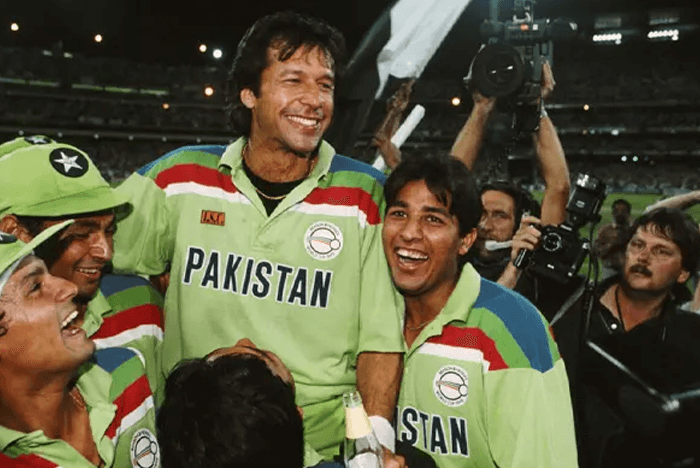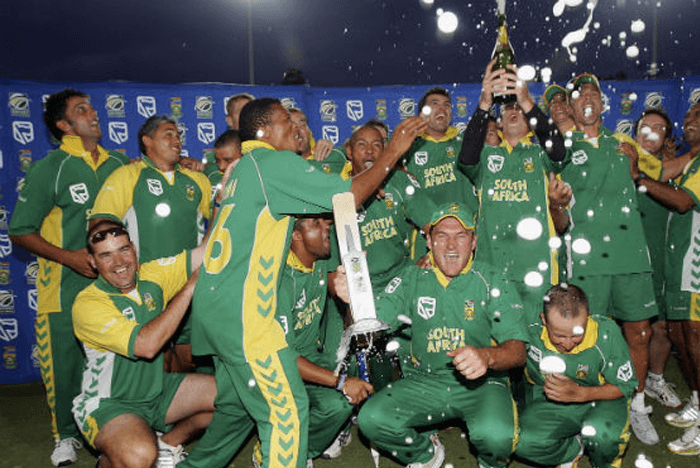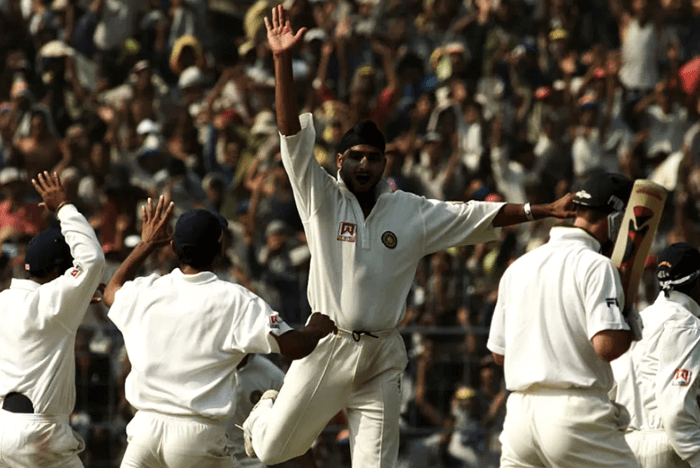The 1992 Cricket World Cup, held in Australia and New Zealand, was a landmark event in cricket history. It was the fifth edition of the tournament and introduced several new features that would become standard in future World Cups, such as colored clothing, white cricket balls, and day/night matches played under floodlights.
Tournament Summary:
- Duration: February 22, 1992 – March 25, 1992
- Final Venue: Melbourne Cricket Ground (MCG), Melbourne, Australia
- Participants: 9 teams (Australia, England, India, New Zealand, Pakistan, South Africa, Sri Lanka, West Indies, Zimbabwe)
- Winner: Pakistan (1st World Cup title)
- Runner-up: England
- Format: Round-robin group stage followed by semi-finals and final
- Total Matches: 39
Highest Run Scorers
| Player | Team | Matches | Runs | Average | Strike Rate | 50s | 100s | Highest Score |
| Martin Crowe | New Zealand | 9 | 456 | 114.00 | 90.83 | 4 | 1 | 100* |
| Javed Miandad | Pakistan | 9 | 437 | 62.42 | 62.55 | 5 | 0 | 89* |
| Peter Kirsten | South Africa | 8 | 410 | 68.33 | 66.88 | 5 | 0 | 90 |
| David Boon | Australia | 8 | 368 | 52.57 | 65.38 | 3 | 1 | 100 |
| Brian Lara | West Indies | 8 | 333 | 47.57 | 77.14 | 3 | 0 | 88 |
Highest Wicket Takers
| Player | Team | Matches | Wickets | Average | Economy Rate | Best Bowling | 5-Wicket Hauls |
| Wasim Akram | Pakistan | 10 | 18 | 18.77 | 4.28 | 4/32 | 0 |
| Ian Botham | England | 10 | 16 | 19.12 | 3.40 | 4/31 | 0 |
| Mushtaq Ahmed | Pakistan | 9 | 16 | 19.43 | 4.21 | 3/41 | 0 |
| Chris Harris | New Zealand | 9 | 16 | 21.37 | 4.28 | 3/15 | 0 |
| Derek Pringle | England | 9 | 15 | 18.73 | 3.64 | 3/8 | 0 |
Hidden and Interesting Facts
- Pakistan’s Remarkable Comeback: Pakistan had a disastrous start to the tournament, winning only one of their first five matches. They staged an extraordinary comeback to qualify for the semi-finals, eventually winning the World Cup. Their captain, Imran Khan, played a crucial role, both as a leader and an all-rounder.
- South Africa’s Return: This World Cup marked South Africa’s return to international cricket after years of isolation due to apartheid. They performed exceptionally well, reaching the semi-finals. However, they were eliminated under controversial circumstances due to the rain rule, which saw them needing an impossible 22 runs off one ball.
- Martin Crowe’s Innovation: Martin Crowe, the New Zealand captain, introduced innovative tactics, including opening the bowling with a spinner, Dipak Patel, which was a surprising and effective strategy at that time. Crowe was also the highest run-scorer in the tournament and was named Player of the Tournament.
- Introduction of Colored Clothing: The 1992 World Cup was the first to feature colored clothing, white cricket balls, and matches under floodlights. This modernized the presentation of the game and set a new standard for future tournaments.
- Jonty Rhodes’ Iconic Run Out: Jonty Rhodes of South Africa became famous for his athletic run-out of Inzamam-ul-Haq in a match against Pakistan. His diving effort to break the stumps became one of the most memorable images of the World Cup and revolutionized the emphasis on fielding in cricket.
- Imran Khan’s Final Act: Imran Khan, playing in his last World Cup, led Pakistan to victory and dedicated the win to the cause of building a cancer hospital in memory of his mother. His performance, particularly in the final, where he scored 72 runs and took the crucial wicket of Ian Botham, was pivotal.
Records and Other Information
- Highest Team Score: 313/7 by Sri Lanka against Zimbabwe in New Plymouth.
- Lowest Team Score: 74 all out by Pakistan against England in Adelaide.
- Most Runs in a Single Match: 456 runs were scored in the match between Sri Lanka (313/7) and Zimbabwe (243/9) in New Plymouth.
- Most Wickets in a Single Match: Derek Pringle of England took 3/8 against Zimbabwe, the best bowling figure of the tournament.
Conclusion
The 1992 Cricket World Cup is remembered as one of the most innovative and dramatic tournaments in cricket history. Pakistan’s improbable triumph, the introduction of modern elements like colored clothing and day/night matches, and the rise of new cricketing stars like Jonty Rhodes and Brian Lara made it a landmark event. The tournament also laid the foundation for the future of One Day International (ODI) cricket, with many of its features becoming standard in the years to come.
This World Cup is especially significant for Pakistan, as it marked their first-ever World Cup victory, and for South Africa, as it symbolized their return to the international cricketing stage.
Sources
- ESPN Cricinfo
- ICC Official Records
- Wisden Almanack
- CricketArchive
- Image Source: crictracker.com



